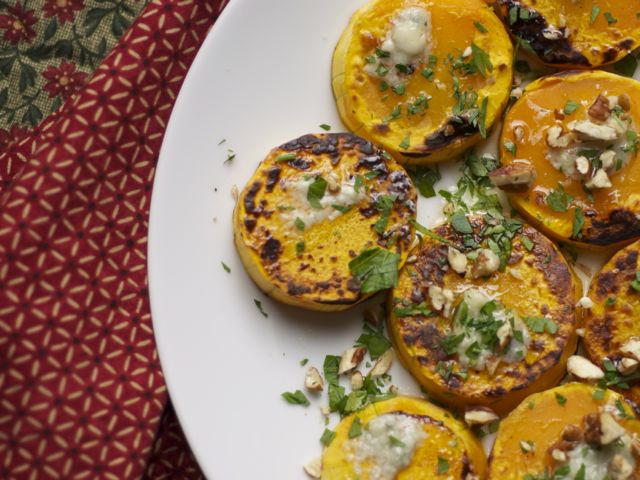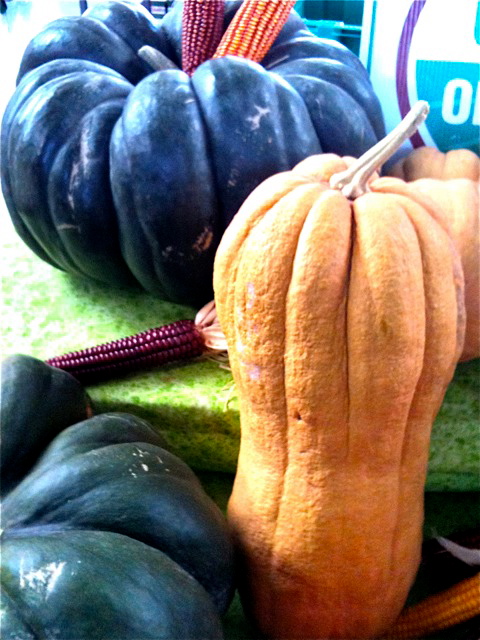
reference-image, l
(article, Deborah Madison)
[%adInjectionSettings noInject=true][%pageBreakSettings nobreak=true] I’ve just met a new squash called Rugosa butternut. It’s shaped like a violin or, perhaps more accurately, like a giant peanut. Its skin is buff to cream-colored, and it’s a fairly hefty fellow, weighing between 6 and 10 pounds. [[block(sidebar). h1.Featured recipe]] Rugosa is related to the butternut, but it’s pinched in the middle rather than bulbous at one end and long and straight (or slightly curved) at the other. It has deeply convoluted sections, like any of the "cheese-box squashes" (Rouge Vif d’Etampes or Musquée de Provence, for example), but it’s long, not flat. There are many good things about Rugosa, but I especially like that the seed cavity is quite small and the squash is quite large, which means you have a great deal of solid flesh at your disposal for gratins or other dishes with large intact pieces. Another plus is that the flesh is smooth and creamy, like a butternut, but not quite as sweet — rich, but with more chestnut in its bite. [%image reference-image float=right width=400 caption="Squash with Gorgonzola butter."] Fortunately for me, local farmer Dave Fresquez sells his Rugosa cut into quarters. He also sells his Musquée de Provence cut into chunks, which is good, because few people have the capacity to store what's left of what can be a very large squash. Besides, I wanted to taste these two side by side, and their being broken down into smaller sections made that much easier to do. I cut each type into wedges about ⅜-inch thick and cooked them slowly in a film of olive oil in a cast-iron pan over medium-low heat. The sugars in the pieces bubbled and colored, and after about 20 minutes, the flesh was soft. I served them both with a spoonful of Gorgonzola butter, crushed walnuts, and parsley. (They’re also good with sautéed radicchio in the mix.) The Rugosa was the paler, drier squash. (When baked for another dish, it was moist.) Its texture was creamy, its sugars not so intense. The Musquée de Provence was deep orange, very moist, and sweet, with just a hint of stringiness emerging in the texture. Both were delicious, just a little different from one another. [%image rugosa float=left width=300 caption="The buff-colored Rugosa squash is shaped like an enormous peanut."] For me, it’s always interesting to meet a new vegetable, and also to compare related vegetables side by side. It’s much easier to discern differences if you don’t have to depend only on your memory of what something tasted like and felt like. Setting up comparative tastings is a good thing to do with friends. That way, you all benefit, and can share in the gathering of how many varieties of squash or potatoes you’re up for tasting. If you do this, I’d love to know what you discover. And hopefully you’ll discover one of these great new squashes at your farmers' market.

reference-image, l

rugosa, l